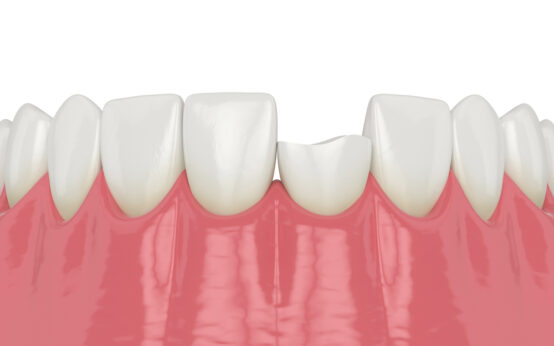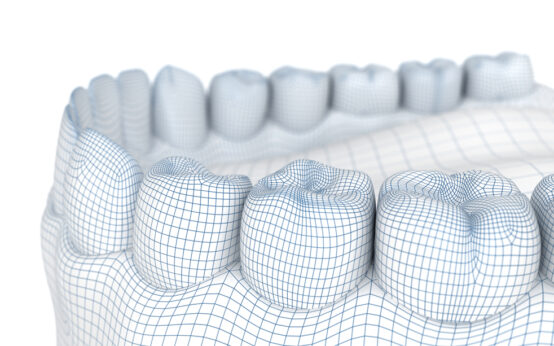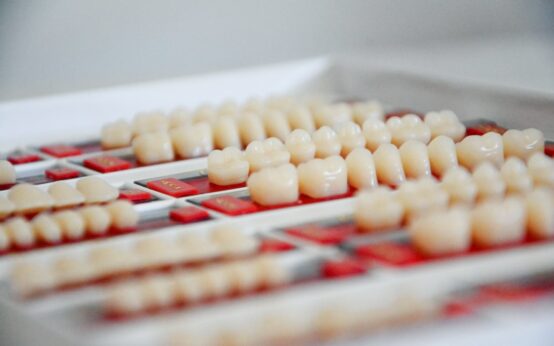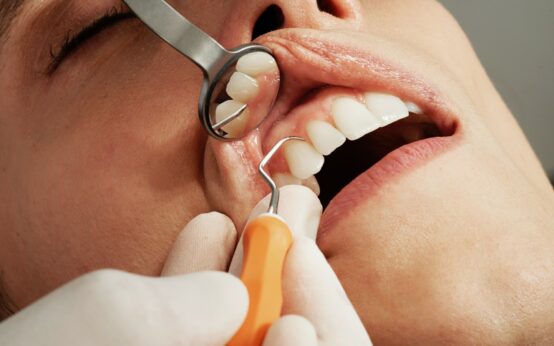A person in need of a tooth restoration may consider Inlays/Onlays, Dental crowns, or root canals. Each of these procedures has its advantages and disadvantages, and the dentist will discuss these options with you in detail during your consultation. Whether you need a single tooth replaced or a full set of teeth replaced, restorative dentistry can help you achieve a beautiful smile. The following article outlines the benefits of each type of procedure.
Table of Contents
Inlays/Onlays
Inlays/Onlays in restorative dental practice are used to restore weakened or extensively restored teeth. They are particularly useful in larger cavities that have repeatedly been breached. The process involves a process known as cementation whereby the dentist bonds a porcelain or metal restoration directly to a tooth. The restoration is then polished and the provisional temporary is removed. After this procedure, the restoration will be extremely stable. Inlays/Onlays can last for many years, depending on how well the patient takes care of their oral health.
A gold inlay, or DO, is a restoration that focuses on the occlusal and distal surfaces of the tooth. The process of preparation is based on the Tucker method, using carbon-tipped stainless steel instruments. The impression material is salmon-colored rather than blue to help capture more detail. This makes it possible to match the inlay's color with the tooth's natural shade.
Inlays/Onlays are the most commonly used restorative dental procedure. Both fill cavities in large areas, such as cusps, and are a more conservative option than a crown. They can also be used to protect cusps. Although they are similar to crowns, they serve different purposes. Inlays are generally made of composite material, while Onlays are made of amalgam or glass ionomer.
Composite resin is another common restorative dental procedure. This material is tooth-colored and is used in inlays and onlays to treat minor to moderate dental problems. They are also referred to as indirect fillings. While inlays are typically made of porcelain, they can also be made from gold or composite resin. These materials have a low failure rate, but they may stain over time. So, when choosing a material for inlays and onlays, it is important to understand how they work in order to make the right choice.
Composite fillings
In restorative dentistry, composite fillings are a common treatment option for teeth with decay. When left untreated, tooth decay can leave a cavity that may eventually infect the inner dentin or root structures of the teeth. To repair these damaged teeth, a dentist will use composite resin fillings to repair them. The process begins by isolating the tooth from saliva and applying an etchant or bonding agent. The composite material is then layered into the hole and cured with a special light. The final composite filling is then shaped and polished to look like a natural tooth.
The process of placing a composite filling is quick and painless and is often completed in one visit. Your dentist will likely select a shade for your filling at the beginning of your visit. The color of the composite material used can affect the brightness of your tooth. You will receive a numbing agent prior to the procedure. After the composite filling has been placed, your dentist will apply the final polish to the surface of the tooth. The final step is to examine the filling and make sure that it fits correctly.
The process of placing a composite filling is very similar to placing a crown, except that composite resin is not made from metal. Instead of metal, the filling material is composed of high-grade plastic and glass ionomers. This material is both strong and durable, and bonds to the natural tooth structure. Composite resin is the preferred material for dental fillings because it is not as prone to damage as traditional amalgam fillings.
Dental crowns
A dental crown strengthens a tooth that has been damaged by decay or other factors. Crowns are made of all-porcelain or porcelain fused to zirconia or porcelain over metal. The materials used for crowns are based on the type of restoration needed. Restorative dentistry is an area of dentistry that restores teeth to optimum health. Below are some factors to consider when choosing a dental crown.
Crowns are necessary for teeth that have been severely damaged or are missing. Crowns protect the damaged tooth and support an artificial tooth between them. People with missing teeth may need crowns to support a bridge. Crowns are also necessary in cases of cracked teeth or cracked tooth syndrome. Crowns can relieve the pain associated with a cracked tooth. The procedure may involve two appointments. The first visit is to prepare the tooth, while the second visit is for the actual final restoration.
Besides replacing missing teeth, dental crowns can also be used to replace teeth. Crowns are similar to a tooth and look just like it. They are made of metal and fit snugly over the replacement tooth. A fixed bridge is a set of teeth that is bonded over another tooth. This type of dental restoration is often recommended when a tooth is not viable enough to eat or chew properly. Once bonded, dental crowns last for a decade or more.
A dental crown is a custom-made cap that covers the visible portion of a tooth. It helps protect decayed or damaged teeth, improve a patient's bite, and cover dental implants or bridges. Crowns can also be used as a cosmetic dental alteration. Crowns are typically created by an offsite dental laboratory. There are several reasons why crowns are necessary for restorative dentistry.
Root canals
Root canals are necessary for patients with impacted teeth. When a cavity or crack occurs, the soft tissues within the tooth's pulp chamber become exposed. The bacteria present in the mouth then enter the pulp chamber, causing a painful infection. Left untreated, an infection inside the tooth can spread throughout the body and can cause a range of problems including serious health complications. Fortunately, most patients are able to avoid the need for root canals.
During a root canal procedure, your dentist will remove enough tooth material to fit a crown or dental implant. This permanent restoration will require rigorous oral hygiene practices to maintain its appearance. You should follow your dentist's instructions closely for the next several weeks after root canal therapy to prevent further issues. The process also requires the use of a temporary solution such as ibuprofen to relieve pain. Once you've had your procedure, you should be able to enjoy your new crown or dental implant.
A root canal is a simple procedure performed by a restorative dentist. The procedure can be performed in one or two office visits, and the recovery period is usually short. A root canal is a simple procedure, and it takes only a short time to complete. It's important to remember that the nerve in your tooth is only responsible for sensory functions. If it dies, you'll need to replace it with a crown or dental implant.
The recovery period for root canal treatment can last from one to three weeks. After undergoing root canal therapy, you may experience sensitivity to the tooth for a few days. This is due to tissue inflammation or infection, so you should avoid strenuous exercise for a week or two to alleviate the pain. After your root canal procedure, you should continue to practice good oral hygiene habits. And make sure you see a dentist regularly.
Veneers
If you have tooth decay or discoloration and want a beautiful smile, veneers are an option. Unlike traditional fillings and bridges, dental veneers do not require the removal of tooth structures. However, they do require tooth preparation. In most cases, your dentist will take X-rays and impressions of your mouth before placing your veneer. The dentist will also trim your tooth enamel to allow space for the veneer. The final step of the process involves bonding the veneers to your teeth.
During the initial appointment, you will be examined by your dentist to determine the best treatment for you. Your dentist will examine your teeth and your dental history to determine a treatment plan. In some cases, braces may be necessary to correct crooked or uneven teeth. The dentist will also take X-rays to check your overall oral health and determine if you need any additional treatments to improve your oral health. In addition, the dentist may recommend undergoing root canal therapy if you have a history of this condition.
Once your dentist has determined your teeth's needs and desired appearance, you will return to the dentist's office. Your dentist will numb you and remove some tooth enamel before placing the veneer on the tooth. He or she will then place the veneer on the tooth and adjust it to fit properly. He or she will polish the veneer and bond it to your tooth with cement. This step is important to the overall success of the procedure.
Another reason to consider veneers for your restorative care is that they can prevent tooth resorption. Moreover, a veneer can help restore tooth enamel, thereby improving your smile's appearance. This option is also recommended if the tooth enamel is strong enough. Veneers can also repair teeth that are damaged due to biocorrosion processes. They can improve your smile's confidence because it is not only beautiful but also functional.
Sources:
- https://www.webmd.com/oral-health/guide/root-canal-procedure-recovery-pain
- https://www.colgate.com/en-us/oral-health/cosmetic-dentistry/veneers/what-are-veneers
- https://www.everydayhealth.com/dental-health/teeth-veneers.aspx
- https://www.healthline.com/health/dental-and-oral-health/veneers#risks-and-complications



 How a Dentist Can Fix a Chipped Front Tooth
How a Dentist Can Fix a Chipped Front Tooth  Ways to Fix Craze Lines Without Braces Or Root Canals
Ways to Fix Craze Lines Without Braces Or Root Canals  Are Temporary Veneers Worth the Trouble?
Are Temporary Veneers Worth the Trouble?  Porcelain Teeth and Veneers
Porcelain Teeth and Veneers  Dental Crowns – What Type of Dental Crown is Right For You?
Dental Crowns – What Type of Dental Crown is Right For You?  Restorative Dentistry – What Are the Different Types of Restorative Dentistry Procedures?
Restorative Dentistry – What Are the Different Types of Restorative Dentistry Procedures?